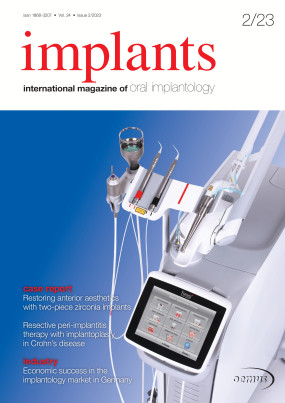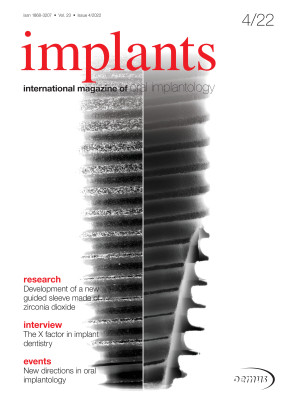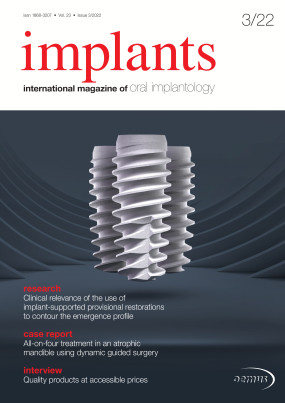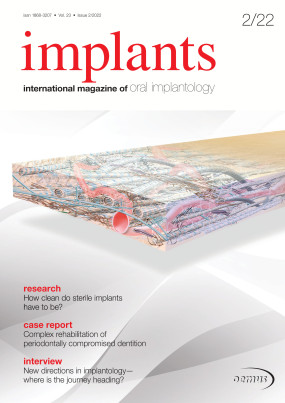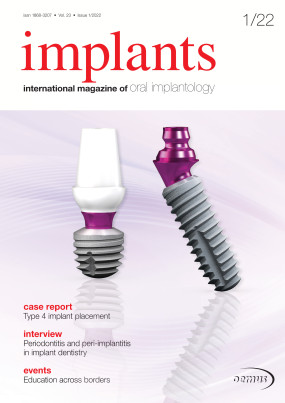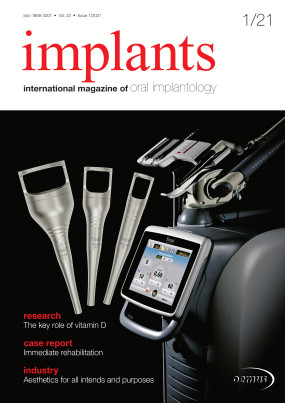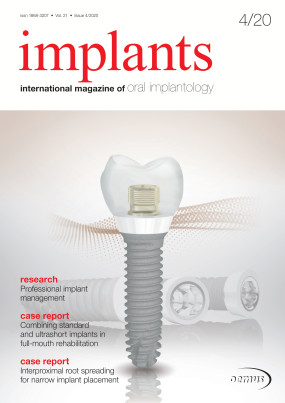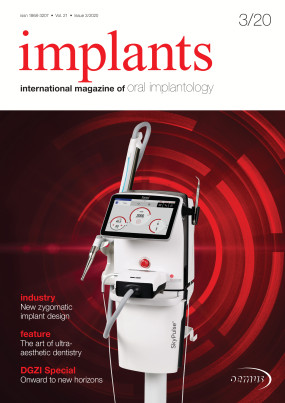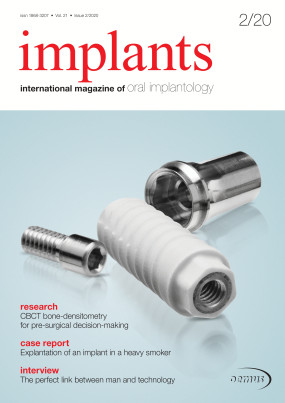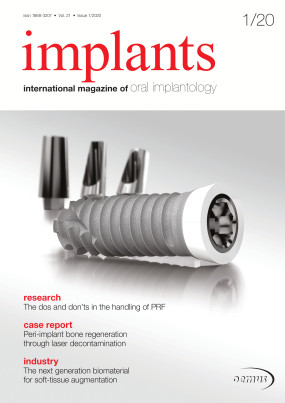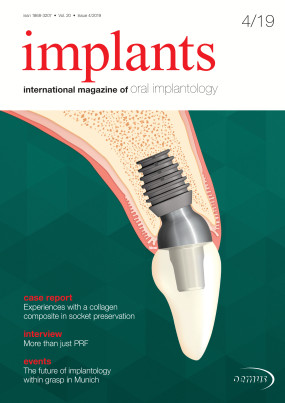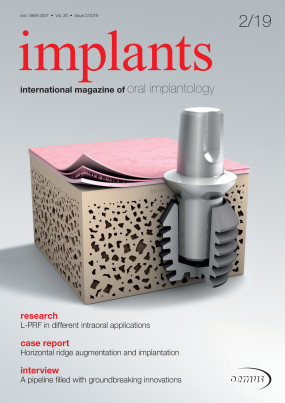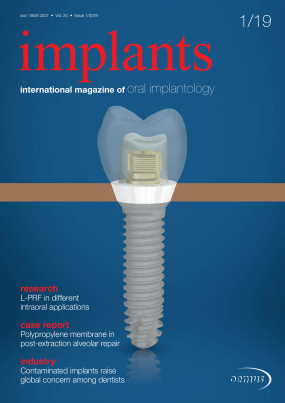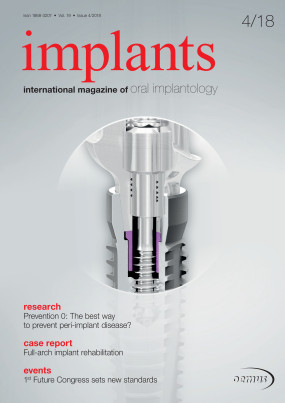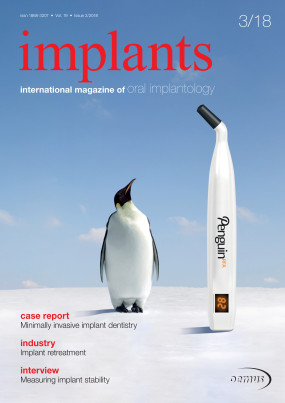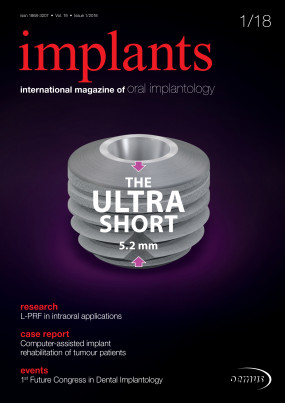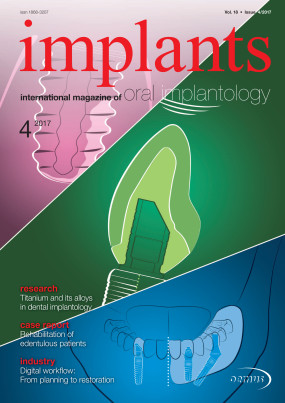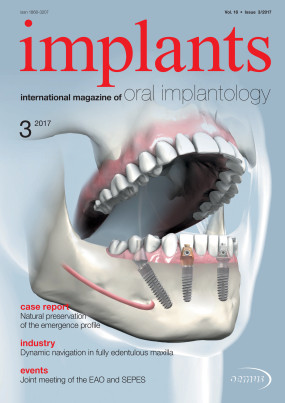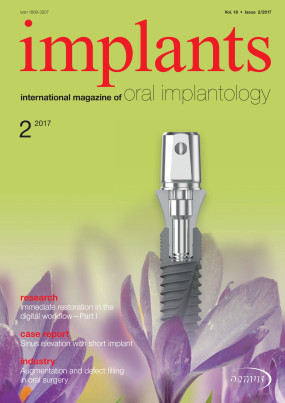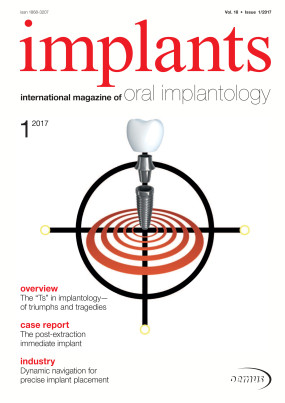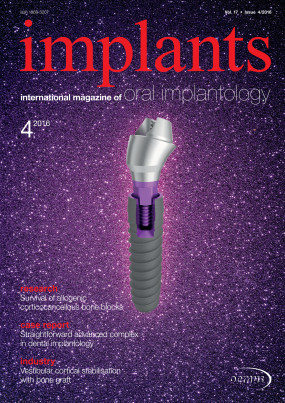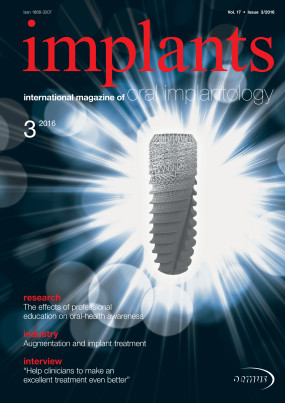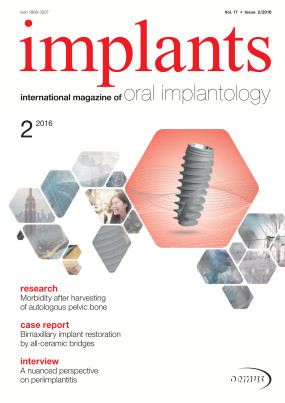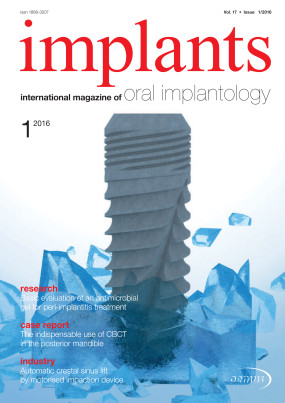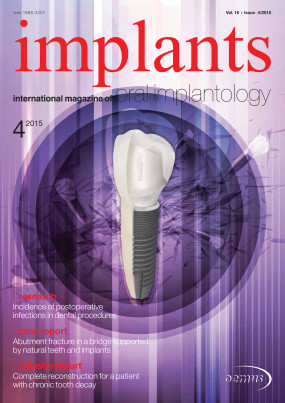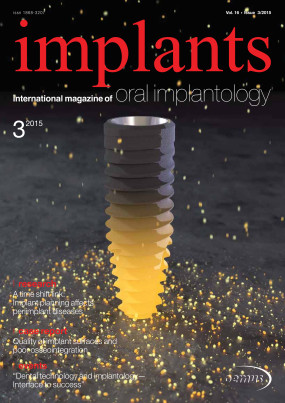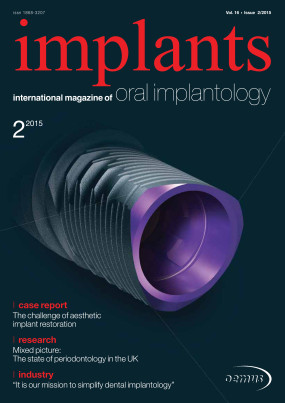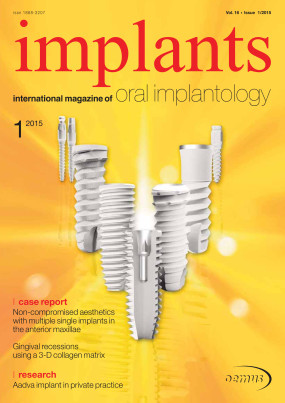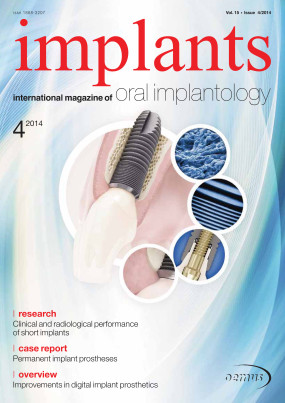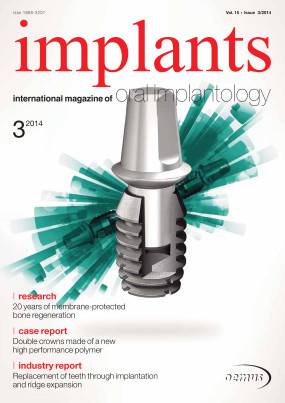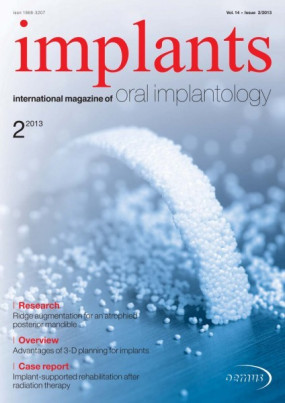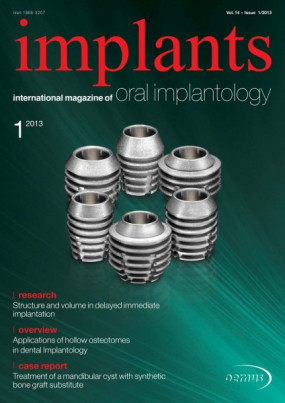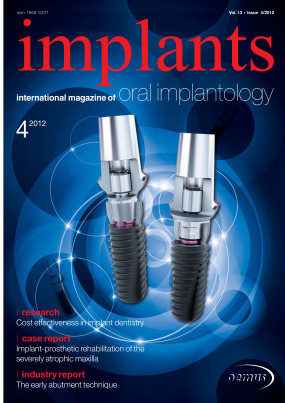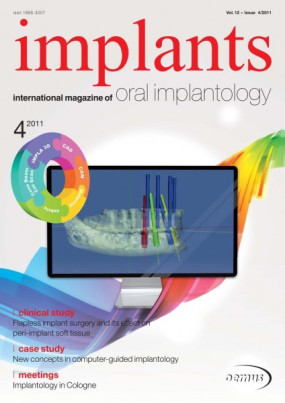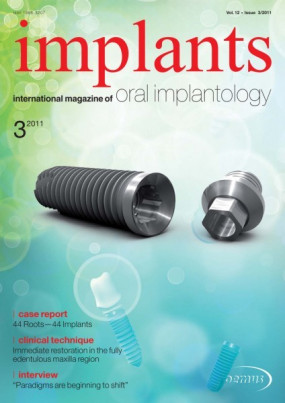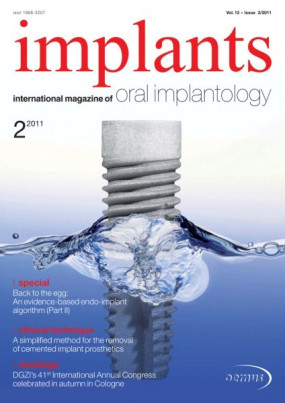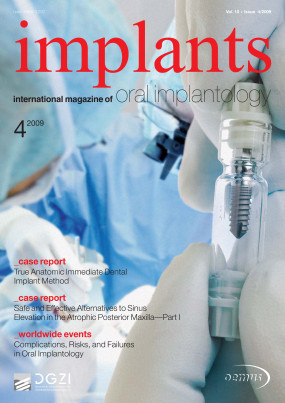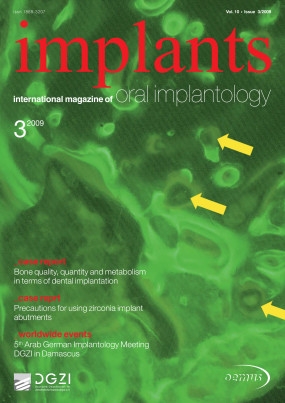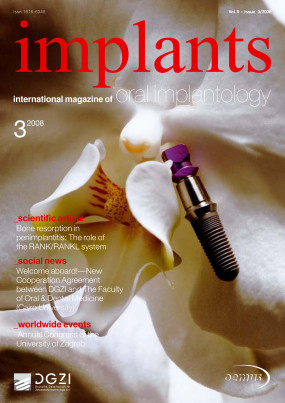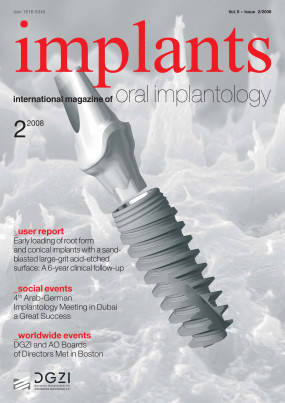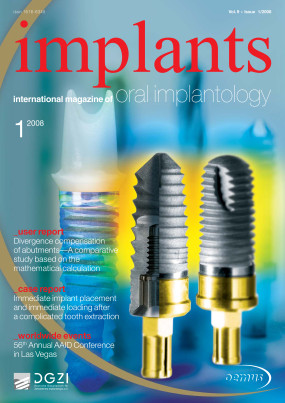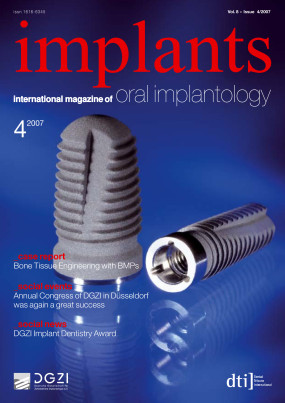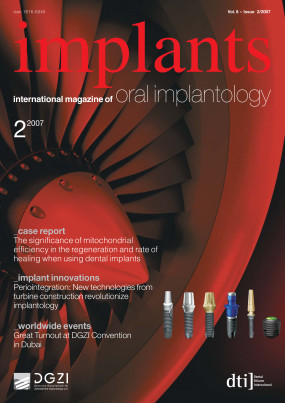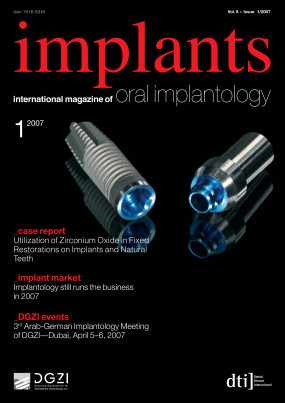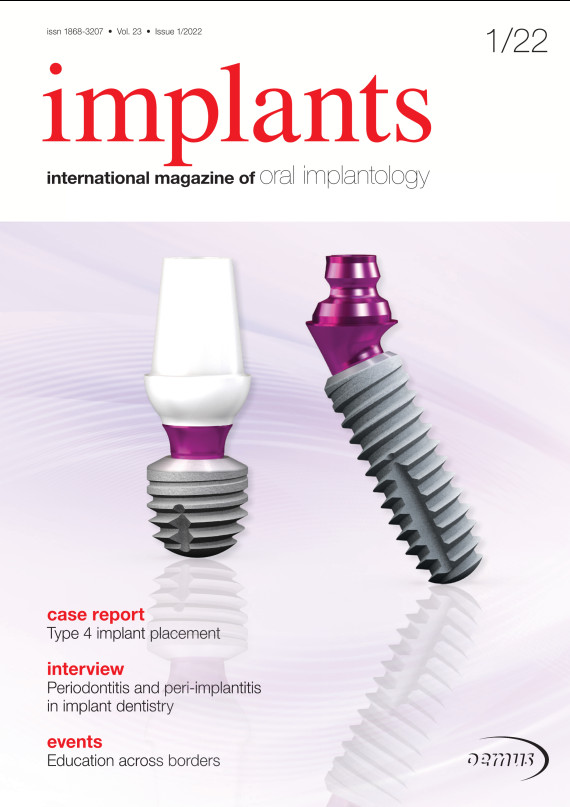Inhaltsverzeichnis
3
Dear colleagues, when writing the editorial for this first issue of our implants—international magazine of oral implantology, the British cabaret sketch Dinner for One came to mind. Each time the legendary butler James asks the question “The same procedure as last year?”, he is answered with the catchphrase “The same procedure as every year, James!” by the lady of the house. Indeed, the situation in which we now find ourselves at the beginning of 2022 is reminiscent of exactly one year ago. In view of the agonising uncertainty, I too have the fear that it could be the same again at the beginning of 2023—the same procedure as...—because the fact is that the pandemic will not let us out of its clutches...
6
Radicular transplantation—The use of dental roots in the treatment of bone insufficiency
Dr Renaud Girieud, France
Treating bone insufficiency is a familiar challenge for all implant practitioners. Such insufficiency can compromise the placement of an implant, its longterm viability and even the anticipated aesthetic outcome. In summary, where there is a bone defect, there are two broad treatment types available to us. Firstly, there is guided bone regeneration. This combines a membrane and a biomaterial, of which there are several variants, depending on the type of membrane and the materials used. Secondly, we can use autogenous bone in block or chip form as an onlay or supporting structure, according to the technique developed by Prof. Fouad Khoury...
12
Partial extraction therapy andimplant treatment in the maxilla
Dr Snježana Pohl, Dr Mijo Golemac, Dr Daniela Grgi´c Miljani´c, Dr Pantelis Petrakakis & Prof. Jelena Tomac, Croatia & Germany
Various techniques and methods based either on grafting of the fresh extraction socket (ridge preservation) with different materials and delayed implant placement or on immediate implantation with grafting of the gap between implant and socket wall have been applied in order to prevent ridge alterations after tooth extraction. However, insights concerning superiority of the type of grafting technique or material are scarce.1, 2 Partial extraction therapy, leaving either the whole root (root submergence therapy) or the buccal part of the root (socket shield technique) of hopeless teeth inside the extraction socket, may have clinical significance as an alternative to conventional preservation procedures...
18
Resolving severe bone atrophy with the cortical lamina technique and innovative materials
Dr Roberto Rossi, Dr Giovanni Franzone & Stefano Giulini, Italy
Various techniques and methods based either on grafting of the fresh extraction socket (ridge preservation) with different materials and delayed implant placement or on immediate implantation with grafting of the gap between implant and socket wall have been applied in order to prevent ridge alterations after tooth extraction...
24
Implant therapy is a safe and reliable method for the re placement of missing teeth. In the past few years, implant dentistry has witnessed several advancements in bioma terial science, treatment technique and even equipment. Digitisation in implant dentistry is one such aspect. The dentist can plan and predict the outcome before per forming the surgery. This enables better communication and improves treatment acceptance. Another aspect of improving predictability is giving utmost importance to the soft tissue during treatment planning.
32
Maxillary molar replacement with an implant and immediate restoration
Dr Leandro Soeiro Nunes, Brazil
The introduction of dental implants for the replacement of missing teeth disrupted the era of dental prosthetic dentistry by providing the possibility of replacing a missing tooth with a fixed restoration without affecting the adjacent teeth to perform a tooth-supported restoration...
36
Peri-implantitis continues to be one of the greatest chal- lenges for dental professionals. According to studies, the prevalence of the condition will continue to rise in the coming years. implants—international magazine of oral implantology spoke with implant specialist Dr Inga Boehncke, who has been running her own practice in Bremen in Germany since 2009, about specific features of implant therapy in the case of previous periodontal disease, surgical and non-surgical treatment protocols for periimplantitis and how the treatment of the condition will develop in the future...
38
Laser is becoming essential for every modern dental practice. Moreover, from an educational standpoint, there are many benefits in terms of the personal and professional development of the practitioner. In this interview with implants—international magazine of oral implantology, Dr Michał Nawrocki explains how laser dentistry has helped to advance his practice and career and why dental laser, especially Fotona’s LightWalker, has become an essential part of his daily practice...
43
Interview: Osstem Europe: New European headquarters in Prague
An interview with JM Lee and Henrik Eichler
As one of the fastest growing implant manufacturers in the world, the South Korean company Osstem Implant provides dental implants and related products to patients in more than 70 countries. Now the company opened the doors to its new headquarters in Prague. In an interview with implants, JM Lee, Executive Managing Director of Osstem Europe, talks about the company’s motivation and their plans for the European market.
44
Education across borders—Maximise your potential with DGZI’s continuing education on an international level
Janine Conzato, Germany
The medical market, particularly the dental market, is becoming increasingly global, and promoting medical progress in the field of implantology has always been a priority of the German Association of Dental Implantology (DGZI). DGZI, established and registered in 1970, is the oldest dental implantology association in Germany and represents in its more than 50-year history practice-oriented and science-based implant dentistry and has set stan- dards in oral implantology in Germany...









